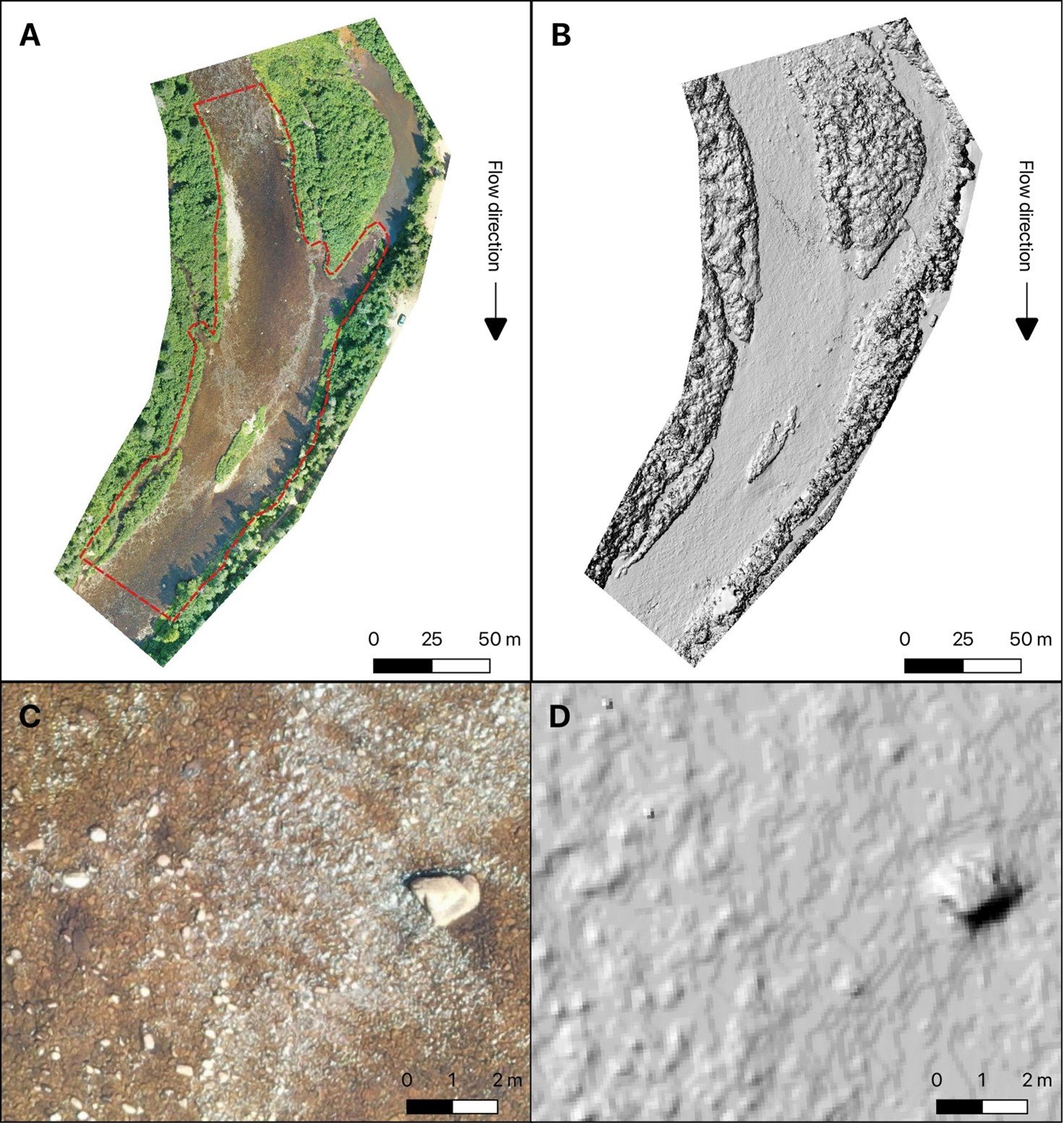

HGS RESEARCH HIGHLIGHT – Numerical analysis of thermal response tests with groundwater flow and heat transfer model
This research, co-authored by J. Raymond, L. Gosselin, R. Lefebvre, and Aquanty’s René Therrien, explores how thermal response tests (TRTs) can be enhanced by employing HydroGeoSphere (HGS), our advanced modelling platform, to simulate coupled groundwater flow and heat transfer processes under complex geological settings. The study investigates the limitations of traditional line-source models, particularly in heterogeneous subsurface conditions, and introduces a numerical modelling approach to improve the accuracy of TRT analyses.

HGS RESEARCH HIGHLIGHT – The HypoSalar project: Integrating hyporheic exchange fluxes into Atlantic salmon (Salmo salar) spawning habitat models
In this research highlight ultra-fine resolution HydroGeoSphere models are used to simulate hyporheic exchange fluxes in river reaches used by Atlantic salmon for spawning. The HypoSalar project is contributing to demonstrate that the capabilities of HydroGeoSphere are not exclusively related to the field of hydrogeology, but can be used for both fluvial geomorphology and ecological studies due to HydroGeoSphere's flexibility and superior modeling approach.

Staff Research Highlight - Assessment of hydraulic and thermal properties of the Antarctic active layer: Insights from laboratory column experiments and inverse modelling
We’re pleased to highlight this publication, co-authored by Aquanty’s senior scientist, Hyoun-Tae Hwang, which investigates the hydraulic and thermal properties of the Antarctic active layer using laboratory column experiments and HydroGeoSphere (HGS) for inverse modeling.

HGS RESEARCH HIGHLIGHT – Heat Tracing in a Fractured Aquifer with Injection of Hot and Cold Water
In this comprehensive study, researchers explore the application of heat as a tracer in fractured porous aquifers, offering new perspectives on groundwater flow and transport dynamics. The research paper investigates the use of hot (50 °C) and cold (10 °C) water injections in a weathered and fractured granite aquifer, where the natural background temperature is 30 °C. This study relies on a number of advanced HGS capabilities including density-dependent geothermal energy transport, fracture flow and time-varying material properties.

HGS RESEARCH HIGHLIGHT – Geothermal Energy Potential of Active Northern Underground Mines: Designing a System Relying on Mine Water
HydroGeoSphere is a powerful tool for evaluating the potential of geothermal heat pump systems. HGS implicitly simulates thermal energy throughout hydrologic systems (including density driven transport effects), and can model extremely complex geological systems with spatially and temporally varying material properties, with or without the presence of discrete fractures, and with the ability to represent mine infrastructure as discrete features within the model.

HGS RESEARCH HIGHLIGHT - Integrated surface-subsurface water and solute modeling of a reclaimed in-pit oil sands mine: Effects of ground freezing and thawing
The HydroGeoSphere model presented here was able to successfully simulate the water balance and water quality response of the reclaimed landforms, and the results indicate that the impact of winter processes (i.e., pore-water freeze/thaw) on infiltration and surface runoff are significant. Including freeze-thaw resulted in reduced infiltration during spring melt and reduced salt loading during winter. In total, a 20% reduction of chloride mass release (over an 8-year period) was simulated when freeze-thaw processes were included in the simulations. These results provide a strong argument for the inclusion if winter processes and coupled heat dynamics for detailed studies of integrated hydrologic processes in the Athabasca Oil Sands region.
HGS Research Highlight - Coupled atmospheric, land surface, and subsurface modeling: Exploring water and energy feedbacks in three-dimensions
This post highlights the recent study by Davison et al. (2015) on the coupling of HGS to an Atmospheric Boundary Layer (ABL) model. Implementing the coupled HGS-ABL model the authors found ...
